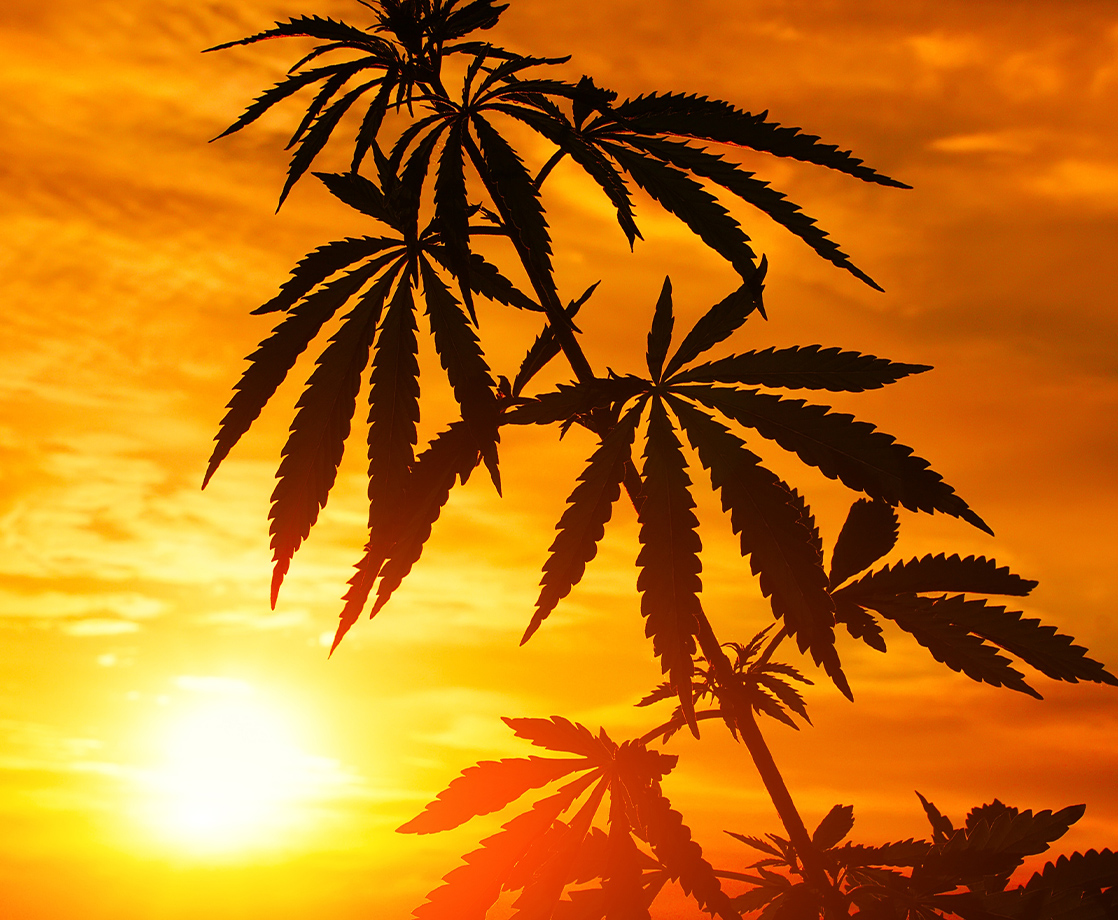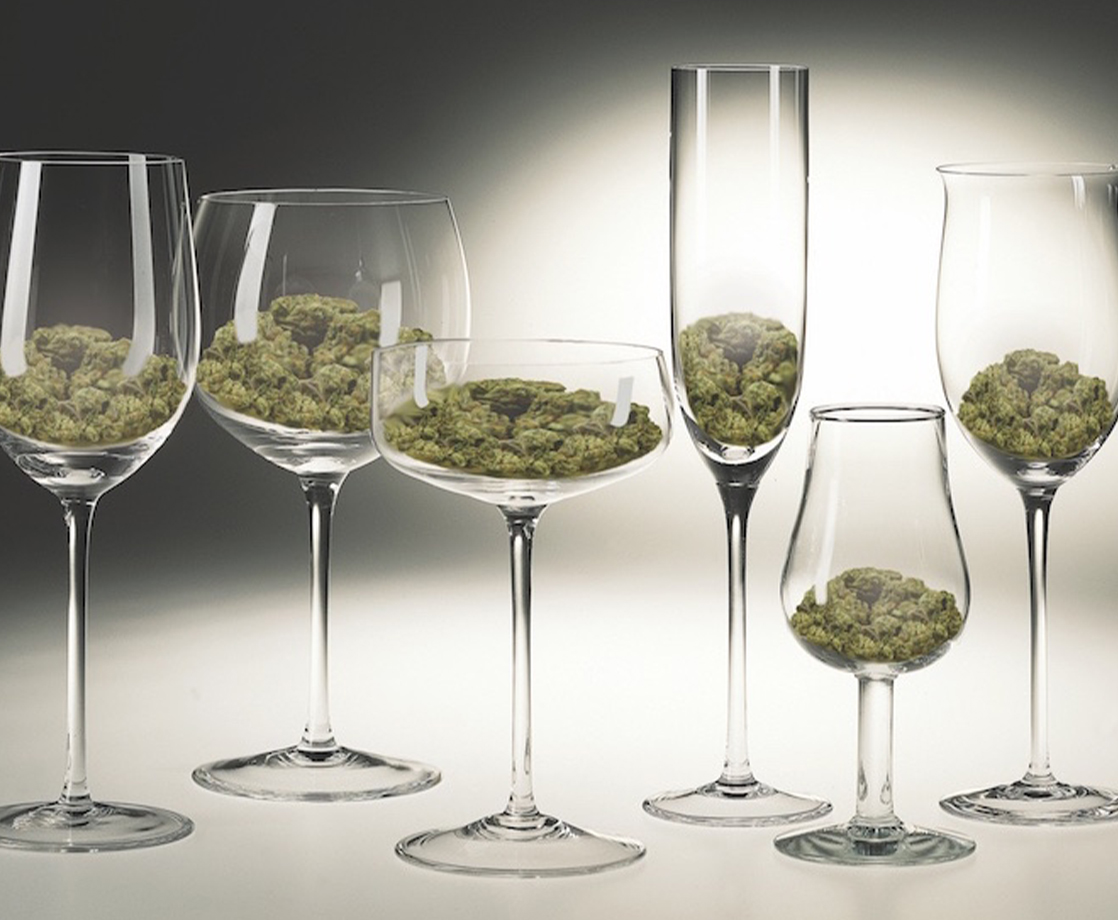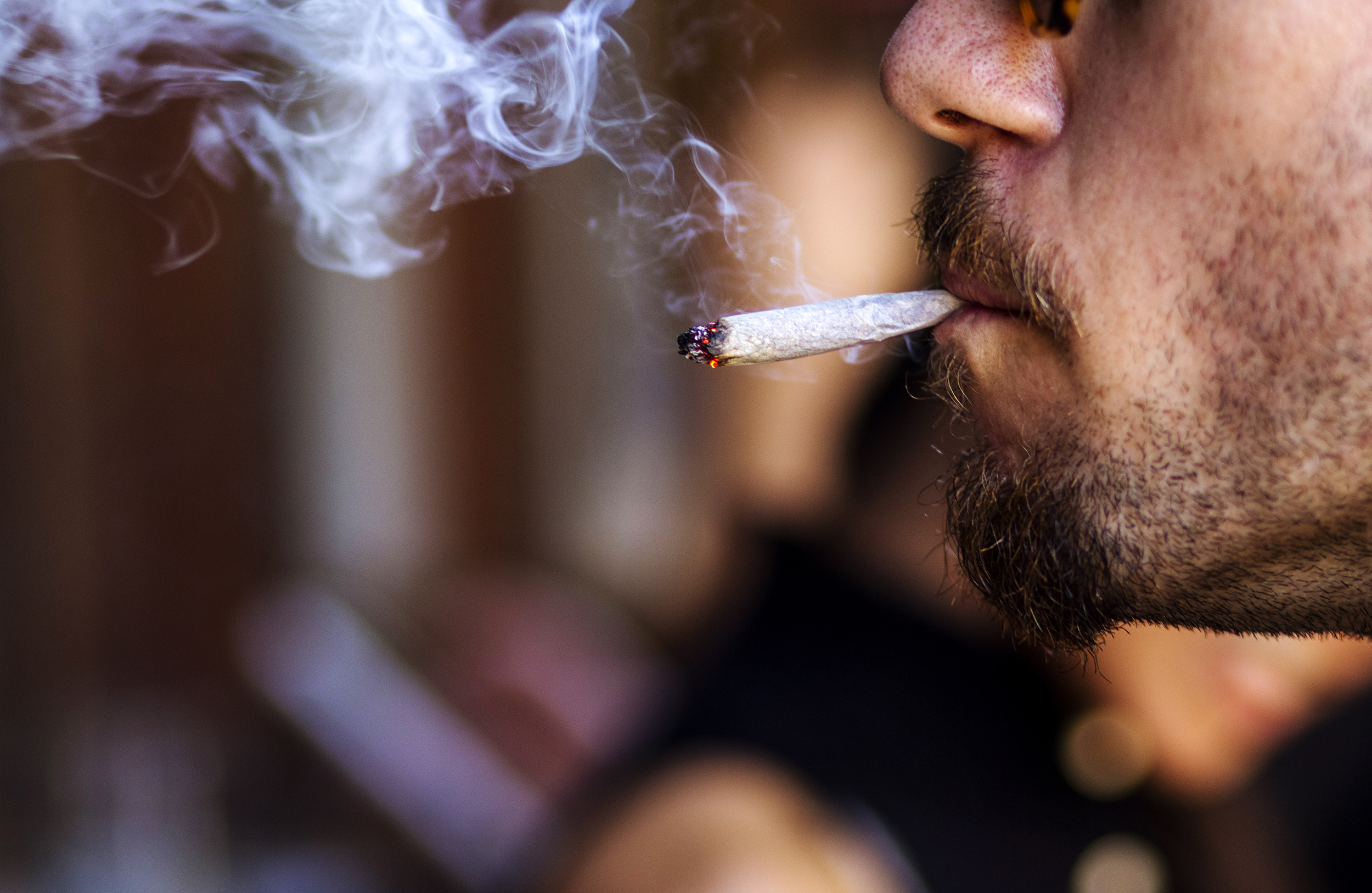The desert is often perceived as a barren landscape equipped with sand dunes and sunkissed rock formations. Aside from animals, the only life that grows out there is the occasional cacti, shrub-like plants that eventually turn into tumbleweeds, and other resilient species. Logically, the desert doesn’t match up with what’s typically considered an “ideal” place to grow weed.
But that logic has been turned on its head thanks to a growing sprawl of indoor and greenhouse grow operations in legal states. For instance, take Desert Hot Springs (DHS), an area within the Coachella Valley. It gets up to 120 degrees during the summer and freezes in the winter. It’s dry, barren, and stark.
But back in 2016, DHS experienced a marijuana boom. A massive influx of cultivators fled to the desert to build indoor mega-grows. Then, Adelanto — another lonely (and hot) desert town — opened its green borders, too. But cultivating in these areas is conventionally odd. Unlike the lush Emerald Triangle, the extreme dry desert weather isn’t an ideal environment for tasty, terpy sungrown bud.
That said, there’s some remarkable weed coming out of California’s desert regions right now. Canndescent, the popular cannabis company, is one notable example. Though its headquarters are in Santa Barbara, the company also has two highly sustainable, solar-powered indoor grow facilities and a 37,000-square foot hybrid greenhouse in Desert Hot Springs. The company is known for producing cultivars with skyrocketing THC levels well over the 30 percent mark.
Growing in the desert isn’t just a California thing, either. It’s the only way to cultivate weed in Nevada, another region that experienced a green rush when state licensing became an option. There’s also the vast Arizona desert. But that region’s cultivation burst has been stymied by the state’s more restrictive medical market.
Nevertheless, it’s evident that people think the desert is prime real estate for greenhouse grows. In fact, the surge of these large-scale desert cultivation sites infers that a new trend is unfolding before us — one that we’re only able to recognize thanks to legalization.
But what does the desert provide that traditional growing hotspots, like Santa Cruz and the Emerald Triangle, don’t?

The Advantages of Desert Cultivation
When Mike Sassano, the founder of Solaris Farms, decided to root his business in Las Vegas, he did so for a variety of reasons. Initially, he settled on Nevada because the state is a limited license state. In other words, there’s less competition in the market. The state is also pro-business and pro-cannabis. There were several other perks that Sassano soon realized came with growing in this barren territory, though.
“One advantage is that you have almost infinite sun. We’re not in a rainy zone, you’re not going to get major cloud cover,” he explained to MERRY JANE. “It’s a very dry environment, and that leads to the second benefit: less contaminants and pests.”
Solaris Farms’ greenhouse is equipped with five bays, or sectioned off flower beds, that hold up to 1,000 cannabis plants each. According to Sassano, his cultivation team harvests two bays per month, which equates to 400 pounds of product cumulatively. With four tiers of flower ranging between $1,000 to $2,100 per pound (the highest tier featuring weed with 27 percent THC), Solaris recently sold out all of its current stock, showing just how fruitful the market in Nevada is.
It’s no surprise that cannabis plants flourish when a powerful light source is readily available. But what the humidless environment in Nevada essentially provides is a vacuum where mold and harmful pests are less likely to thrive. This is particularly helpful, considering strict (and expensive) testing regulations hold the final say over whether cannabis can be sold on the legal market. So, the lack of humidity and late season rains can make the desert a safe haven for flowering cannabis plants — under the purview of a talented greenthumb.
Another advantage of operating a greenhouse in the desert is that it can lower electricity costs. This is particularly helpful when it comes to implementing evaporative cooling systems, like a wet wall environment. This cooling method draws air into a greenhouse through the wet wall, ultimately allowing evaporated water to keep the interior cool.
It’s efficient and inexpensive to maintain, especially for a desert grow-op. But this cooling method wouldn’t make sense in a humid or rainy environment because mold would ravage the plants. Solaris Farms and Canndescent have both integrated evaporative cooling systems into their respective greenhouse grows, which saves them money and keeps their tasty buds hydrated and happy.
“Not only is evaporative cooling extremely efficient in that space, but it’s not as costly as HVAC [cooling systems] used in indoor settings,” said Tom Williamson, the Operations Manager of Canndescent. “The temperatures can reach up to 120 degrees [Farenheit] in that area, but we can combat that and actually lower the temperature to about 90 degrees, which is not only more tolerable for the plant’s root structure, but it’s also way more manageable for our cultivation team working in that space.”
Canndescent also makes use of the desert’s relentless sun by integrating solar panels into their two indoor facilities. This source of renewable energy allows the company to reduce its electricity costs, showcasing yet another cost-effective benefit of growing out in the desert.
“Our large-scale solar project went online late last year, it is offsetting our energy costs up to 20 to 30 percent during peak load times,” said Williamson. “On average, we’d spend around $26,000 to $32,000 on an 11,000 square foot facility, but the solar panels offset those energy costs literally up to 30 percent.”
While the solar project reduces the electricity costs of Canndescent’s indoor facilities, the operational costs of its greenhouses are significantly less. According to Williamson, it’s essentially half the price. In the greenhouse, the cultivation team doesn’t need to account for HVAC units, supplemental carbon dioxide, or light ballasts and rigs.
The trade-off here, however, is that less environmental control in a greenhouse setting generally leads to less potent flower. That’s why Canndescent’s greenhouse is primarily used to yield flower for their goodbrands line, a mid-range set of products that has a lower price point than their flagship flower. Inside of this 37,000-square foot operation, where Canndescent is harvesting around 500 pounds per month, there are 12,000 plants in vegetation, around 6,000 flowering plants, 4,000 clones, and 300 mothers.
While most cultivators in the region are busy pushing out high quantities of weed in a Big-Ag setting, Canndescent is focused on quality and potency. Believe it or not, the company is running one of the smaller operations in Desert Hot Springs. For perspective, the Canadian cultivation company Sunniva is in the process of constructing a 489,000 square foot indoor grow operation in Cathedral City, a neighboring desert town to DHS.
But Canndescent’s indoor operation is a step ahead of Big-Ag grows. Williamson says it’s because of something called “compartmentalized cultivation efforts,” which entails growing in several isolated rooms where they can better control the environment and prevent unwanted outbreaks of microbes or root aphids. Moreover, Canndescent is the only DHS operator with a greenhouse operation or solar project on-site, lending credence to the company’s proclaimed sustainability efforts.
In general, utilities — like electricity — are extremely cheap in Desert Hot Springs due to the abundance of solar power and wind turbines sprinkled throughout the region. This doesn’t just mean power is more affordable there, it also means that most electricity is sourced from renewable energy projects.

It’s Not All Sunshine in the Desert
One challenge desert cultivation sites have to overcome is harsh winter evenings, which can drop below 30 degrees pretty easily.
“It never really dawns on you until you’re in the desert in the winter when the sun goes down — you need a coat,” Sassano explained. “You get those seasonal fluctuations where it can be as high as 110 degrees [Farhenheit] in California or Nevada deserts, and then you can get down to freezing levels at night.”
These extreme weather fluctuations are not ideal for cannabis plants. Therefore, desert-based cultivators must put a lot of thought — which often translates to money — into their setup in order to survive. Compared to the more mild temperatures of the Emerald Triangle, you need extra equipment to deal with the heat and to prevent the frigid nights from impacting your crops.
“You can be sure that setting up a grow in the desert is going to be more expensive by a fairly large margin,” Sassano said. “You need a lot more equipment, you need more cooling, you need more heating than you would in a more temperate environment. Your cost to build will probably be 1.5 to 2 times more.”
While Sassano may be dealing with higher operational costs in Nevada, Canndescent claims that it’s had the opposite experience when it comes to Desert Hot Springs. The region actually seduces cultivators with its lower taxes and cheaper cost of living — even with having to keep plants comfortable on frigid evenings and cool on hot days.

What About Water?
In general, mold isn’t really an issue when cultivating in the desert because it’s so dry. But you still need water to grow crops. So, how do these desert-based operations obtain H₂O?
“There’s a lot of access to water in the desert,” Sassano said. “Ultimately, it depends on the desert you’re in and how far you have to drill. But there are water tables, and they’re generally very well filtered because the water filters through the sand and rocks, making it very clean.”
In Nevada, a state that acquires most of its revenue from the gambling industry, water and electricity are made affordable in order to appeal to residents, according to Sassano. Therefore, in the case of Solaris Farms, sourcing water hasn’t been an issue. For grow operations located in California — a consistently drought-ridden state — you might expect water to be much more expensive and scarce. But the opposite is true for cultivators in Desert Hot Springs. The city sits upon one of the largest aquifers in the continental United States, along with the rest of the Coachella Valley.
“When the rest of the state of California is going through a drought, the desert is actually fine,” Williamson explained. “We never experience water shortages out here because we have a huge reservoir sitting underneath us.”
Despite water availability, many desert grow-ops have integrated systems to limit water usage. Canndescent, for instance, utilizes a drop-down irrigation system that carefully drips water to each individual plant, only providing what’s necessary while still allowing the crops to flourish.
“We’re probably more water-efficient on site here than you are in your own home,” Williamson said. “With how finely tuned-in our water cycles are, we don’t water the plants all day everyday, we actually allow the medium substrate to dry out, and the minute we reintroduce water to that root structure again, the plant just soaks it up immediately.”
By combining the renewable energy of solar panels and water efficiency, Canndescent operates a commercial-sized grow without expending too much energy or water. This is especially important in California, where the cannabis industry has continued to grapple with high costs and limited access to these utilities.

Same ol’ Strain, New Environment
Setting up a functional greenhouse in the desert is one thing, but finding the right cannabis strains that will thrive in a naturally hot, dry environment is an entirely different quandary. If you take a legendary strain from Humboldt County and transport it into the Nevada desert, for example, the final product will be completely different — even in a controlled, indoor environment. In fact, even if a cultivator uses the same nutrients, water, and methodology, a strain will still grow differently in the desert because there’s a different amount of air pressure and sunlight compared to growing in an elevated forest.
When it comes to creating genetics that will thrive in a new region, there’s going to be a lot of trial-and-error before finding success. In the case of Solaris Farms, the cultivation team began testing out different indoor-grown-genetics from California, Colorado, and the East Coast before their greenhouse in the desert came into existence.
After determining the best desert phenotypes, Solaris attempted to move these newly selected breadwinners from a tiny 1,000-foot indoor pod system — which was constructed to preserve their cultivation license — into the newly constructed greenhouse. While Sassano didn’t disclose the exact strains he selected for production, he did elaborate on the genetic development and pheno-hunting process, which altogether took about two years.
“Once we got the genetics into the greenhouse, some made it and some didn’t,” Sassano said. “Then we had to pheno-hunt, which took a whole year just to get to the right phenotypes into production.”
When deciding what phenotypes Solaris Farms wanted to start producing, Sassano explained that he considered a number of factors, including THC percentages, terpene profiles, and highest yielders. The plants that produced the most ultimately served as evidence proving that these phenos “must really like Las Vegas.”

The Pros and Cons
While Sassano doesn’t necessarily see Northern California losing its cannabis production crown anytime soon, he does believe that procuring land for desert grows will become more competitive in the near future.
“I think you’ll continue to see higher yields coming out of the lush California areas, which will be more acclimated for higher volumes,” he explained. “Desert grows will be more specialized and possibly have better lab tests, because we’re in a controlled environment with less contamination.”
Williamson echoed a slightly different sentiment than Sassano, stating that areas like the Emerald Triangle would continue to thrive for more craft-like cannabis grows, but that large-scale operations will continue to populate the desert for the lucrative real estate prices, lower tax rates, and less mold — among other benefits.
While he does concede that sungrown cannabis from Northern California has superior terpene profiles, the indoor setting at Canndescent allows the grow team to achieve much higher THC levels. In fact, according to Williamson, Canndescent recently tested a cultivar that demonstrated THC levels exceeding 36 percent, which is something that just can’t be replicated in an outdoor environment.
Thanks to legalization, cannabis cultivators have more options for where and how they can grow than ever before. While the desert may be barren and desolate, it’s becoming a fruitful growing region nonetheless. Just try the THC-rich flower from a farm like Solaris or Canndescent — it will taste like anything but tumbleweeds.
Follow Tyler Koslow on Twitter











